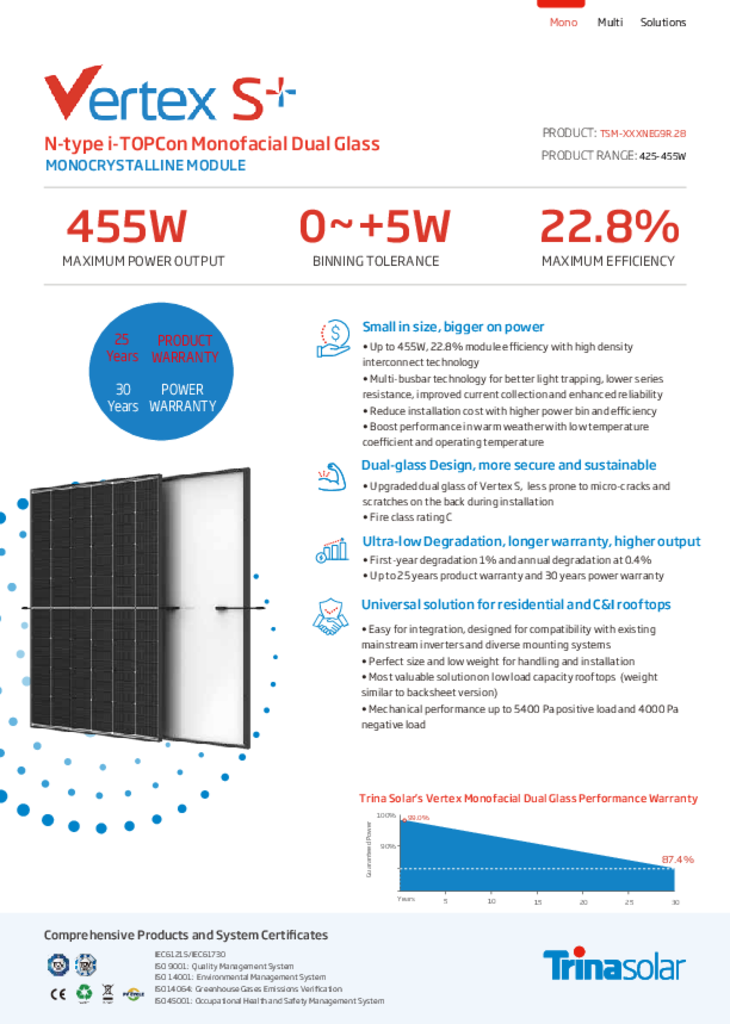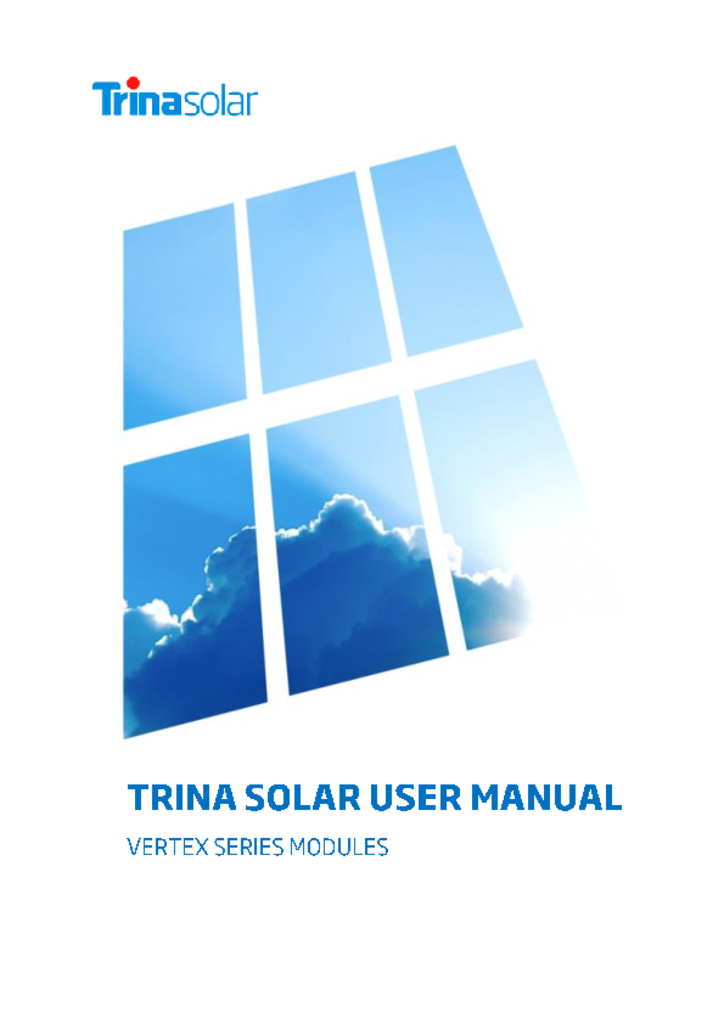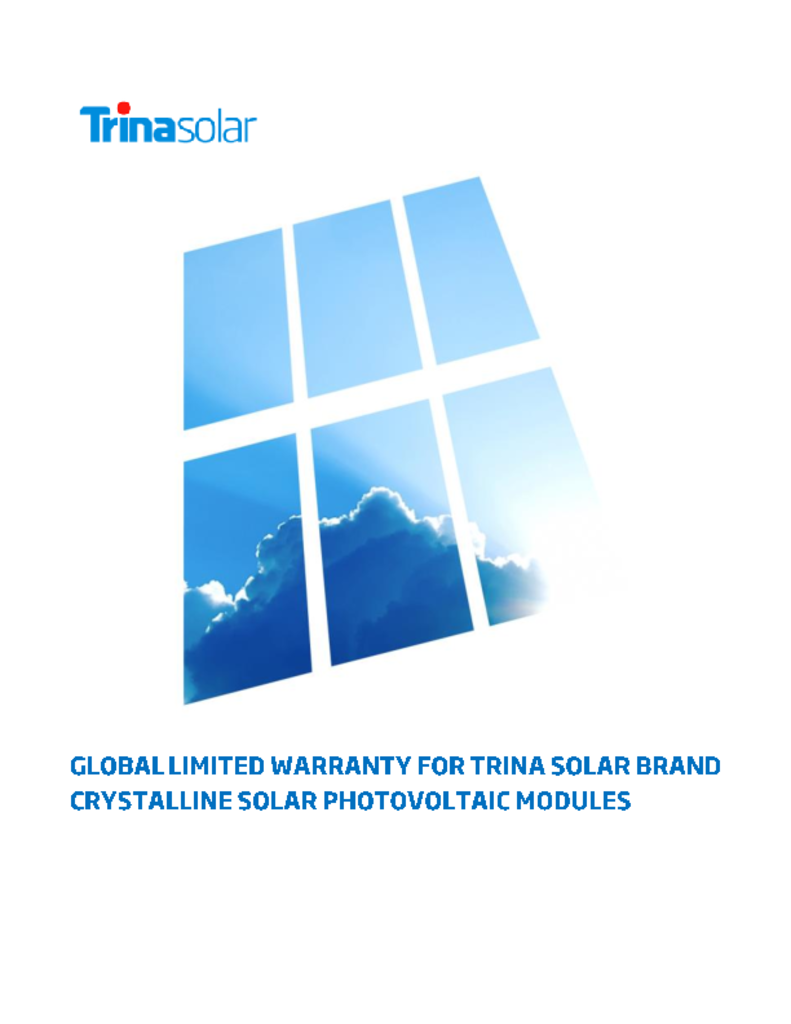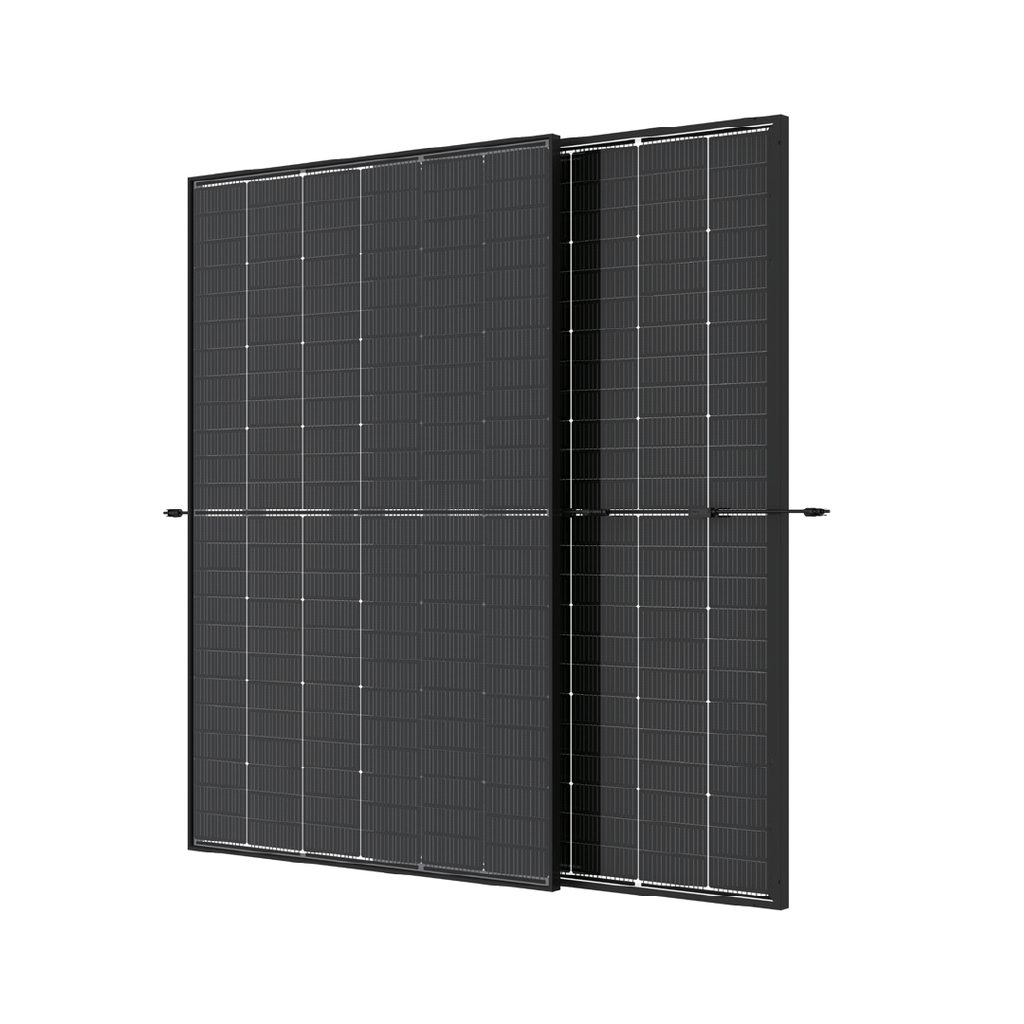
Trina Vertex S+ 440W
GET A FREE QUOTE
QUICK REVIEW
The Vertex S+ is a high-performance solar panel featuring dual-glass and N-type i-TOPCon cell technology, delivering enhanced durability, fire resistance, and recyclability. Ideal for both residential and commercial projects, this next-generation panel ensures long-term reliability with a 30-year power warranty and a 25-year product warranty.
Model: TSM-440NEG9R.28
Key Specifications:
Nominal Power: 440W
Panel Efficiency: 22.0%
Solar Cells: N-type i-TOPCon Monofacial Dual Glass
Power Warranty: 30 years
Product Warranty: 25 years
Electrical Parameters:
Open Circuit Voltage: 52.6V
Short Circuit Current: 10.71A
Mechanical Parameters:
Dimensions: 1762 x 1134 x 30mm
Weight: 21.0kg
Durability and Performance
The dual-glass design of the Vertex S+ enhances durability by providing increased resistance to micro-cracks and environmental stress. Paired with advanced N-Type i-TOPCon cell technology, it offers superior fire resistance, recyclability, and long-lasting performance, making it ideal for residential and commercial installations.
Sleek, Modern Design
With no front-grid lines, the Vertex S+ combines sleek aesthetics with practical functionality, enhancing the visual appeal of any rooftop installation.
Effortless Installation
The Vertex S+ is compact and easy to install, making it a perfect solution for residential rooftops and commercial projects alike.
High Efficiency with Low Degradation
Delivering high power output with minimal degradation, the Vertex S+ ensures consistent energy production over time, maintaining efficiency and reliability.
Comprehensive Warranty
Thanks to its dual-glass construction and N-Type i-TOPCon technology, the Vertex S+ comes with an industry-leading 30-year power warranty and a 25-year product warranty, offering long-term peace of mind.
Trina Solar’s Vertex Monofacial Dual Glass Performance Warranty

Testimonials
What they are saying about us
F.A.Q
Frequently Asked Questions
-
I have single phase power, how much rooftop solar PV can I install on my roof?
If your house is single phase power, the amount of rooftop solar PV that you can install will depend on your electricity network provider, as each electricity network provider has different rules.
In almost all instances, you can install more inverter capacity than what the electricity network provider says, so long as you grid export limit your solar PV system. Note: Not all inverters have grid export limit capability.
Below is a table showing the allowed capacity (inverter capacity and your grid export limit), for each of the electricity network providers for single phase households:
SA Power Networks (SA) max 10kW inverter capacity, 5kW export limit Powercor (VIC) no inverter limit, 5kW export limit CitiPower (VIC) no inverter limit, 5kW export limit Ausnet Services (VIC) max 10kW inverter capacity, 5kW export limit United Energy (VIC) max 10kW inverter capacity, 10kW export limit Jemena (VIC) max 10kW inverter capacity, 10kW export limit Energex (QLD) max 10kW inverter capacity, 5kW export limit Ausgrid (NSW) max 10kW inverter capacity, 10kW export limit EVO Energy (ACT) max 10kW inverter capacity, 5kW export limit -
What are the benefits of rooftop solar power?
There are many benefits in installing a solar PV system including:
- Reduce or eliminate your power bill - you can regain control of your electricity costs.
- A revenue generating asset - you make back many times the initial cost of the system over the lifetime of your solar PV system.
- Add value to your home - a solar system adds value to your home increasing the resale value.
- Reduce your carbon footprint - a solar system generates no greenhouse gases while in operation giving you zero carbon power and lowing your overall carbon footprint.
- Reduce or eliminate your power bill - you can regain control of your electricity costs.
-
What size solar PV do I need for my off-grid?
You want as large a rooftop solar PV system as you can fit on your roof to reduce the amount of time you need to rely on your backup generator that may be required for periods during winter periods or times of low solar radiation (i.e. multiple cloudy days).
We generally recommend a minimum 10kW solar PV system, but the final size will depend on your anticipated load/demand. We can help you work this out by using our load profile sheet as part of our comprehensive quoting process.
Compact Size, More Power
- Delivers up to 455W with a module efficiency of 22.8%, powered by high-density interconnect technology.
- Multi-busbar design enhances light trapping, reduces series resistance, improves current collection, and increases overall reliability.
- Higher power output and efficiency reduce installation costs.
- Performs efficiently in warm climates thanks to a low temperature coefficient and operating temperature.
Dual-Glass Design for Security and Sustainability
- Enhanced dual-glass construction reduces susceptibility to micro-cracks and scratches during installation.
- Fire Class C rating for added safety.
Ultra-Low Degradation, Extended Warranty, Higher Output
- 1% first-year degradation and just 0.4% annually thereafter.
- Backed by a 25-year product warranty and a 30-year power warranty.
Versatile Solution for Residential and C&I Rooftops
- Easy to integrate, compatible with most mainstream inverters and mounting systems.
- Lightweight and compact for easy handling and installation.
- Ideal for low-load capacity rooftops, offering mechanical performance of up to 5400 Pa for positive loads and 4000 Pa for negative loads.
MECHANICAL DATA
| Solar Cells | N-type Monocrystalline |
| No. of cells | 144 cells |
| Module Dimensions | 1762×1134×30 mm |
| Weight | 21.0kg |
| Front Glass | 1.6 mm, High Transmission, AR Coated Heat Strengthened Glass |
| Encapsulant material | POE/EVA |
| Back Glass | 1.6mm, Heat Strengthened Glass |
| Frame | 30mm Anodized Aluminium Alloy, Black |
| J-Box | IP 68 rated |
| Cables | Photovoltaic Technology Cable 4.0mm2 (0.006 inches2), Length: 1100mm/1100mm(43.3/43.3 inches) |
| Connector | Stabuli MC4 EVO2 |
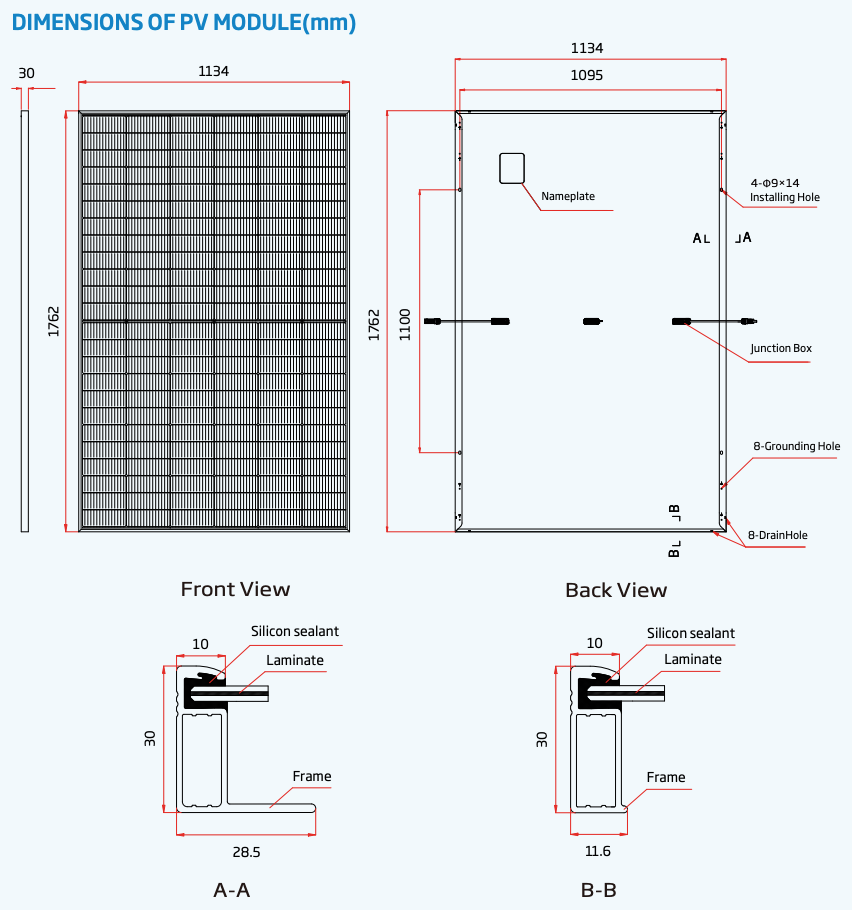
ELECTRICAL DATA (STC)
STC: Irrdiance 1000W/m2, Cell Temperature 25ºC, Air Mass AM1.5. *Measuring tolerance: ±3%.
| Peak Power Watts-PMAX (Wp)* | 440 |
| Binning Tolerance-PMAX (W) | 0 ~ +5 |
| Maximum Power Voltage-VMPP (V) | 44.0 |
| Maximum Power Current-IMPP (A) | 10.01 |
| Open Circuit Voltage-VOC (V) | 52.2 |
| Short Circuit Current-ISC (A) | 10.67 |
| Module Efficiency η m (%) | 22.0 |
ELECTRICAL DATA (NOCT)
NOCT: Irradiance at 800W/m2, Ambient Temperature 20°C, Wind Speed 1m/s.
| Maximum Power-PMAX (Wp) | 336 |
| Maximum Power Voltage-VMPP (V) | 41.4 |
| Maximum Power Current-IMPP (A) | 8.14 |
| Open Circuit Voltage-VOC (V) | 49.5 |
| Short Circuit Current-ISC (A) | 8.60 |
TEMPERATURE RATINGS
| NOCT(Nominal Operating Cell Temperature) | 43°C (±2°C) |
| Temperature Coe cient of PMAX | -0.29%/°C |
| Temperature Coe cient of VOC | - 0.24%/°C |
| Temperature Coe cient of ISC | 0.04%/°C |
MAXIMUM RATINGS
| Operational Temperature | -40~+85ºC |
| Maximum System Voltage | 1500V DC (IEC) |
| Max Series Fuse Rating | 25A |
CLEANING
Before cleaning, make sure to wear PPE, such as insulated protective gloves, protective glasses, hard hats, safety insulated shoes, etc.
Do not stand on the modules or trackers for cleaning work.
The amount of electricity generated by a solar module is proportional to the amount of light captured. A module with shaded cells generate less energy, and therefore, it is essential to keep PV modules clean. The dirt such as bird droppings, leaves, dust is usually need to be cleaned.
When cleaning the modules, make sure that the temperature difference between the water and the module is in the range of -5℃ to 10℃.
Use a dry or wet, soft and clean cloth, sponge, or soft bristled brush to wipe the photovoltaic module. Please make sure that the cleaning tools do not wear out glass, EPDM, silicon, aluminum alloys or steel.
If there is greasy dirt or other substances which are difficult to clean, conventional household glass cleaning agents can be used. Pay attention not to use alkaline and strong acidic solvents, including hydrofluoric acid, alkali, acetone.
For modules that are installed horizontally (0° tilt angle), they should be cleaned more frequently, as they do not have "self-cleaning" function as those installed at 10° or larger tilt angles.
The back surface of the monofacial module usually does not need to be cleaned. When cleaning the back of the bifacial module, avoid any sharp objects that may cause damage or penetrate the base material. The other cleaning requirements are the same as the front-side.
NOTES:
Take care to prevent foreign objects such as lawn mowers and rolled up stones from hitting the surface of modules that would cause the damage of glass or modules.
Cleaning activities create risk of damaging the modules and array components, as well as increasing the potential electric shock hazard.
Do not clean the modules during the hottest time of the day to avoid thermal stress on the modules.
Cracked or broken modules represent an electric shock hazard due to leakage currents, and the risk of shock is increased when modules are wet. Before cleaning, thoroughly inspect modules for cracks, damage, and loose connections.
During the daylight, the voltage and current present in the array are sufficient to cause a fatal electric shock.
Please make sure that the array has been disconnected from other active components before starting the cleaning.
Wear suitable protective clothing (clothes, insulating gloves, etc.) when cleaning the modules.
Do not immerse the module, partially or totally, in water or any other cleaning solutions.
Do not use such as lubricants and organic solvents to clean the connectors.
Do not clean modules under the weather conditions of wind more than 4 class (in Beaufort scale), heavy rain or heavy snow.
When cleaning the modules, it is forbidden to step on the modules, forbidden the injection of water to the backside of the modules or cables. Please ensure that the connectors are clean and dry to prevent electric shock and fire hazards.
Do not use steam cleaner.
For detailed requirements regarding cleaning, please refer to White Paper for PV Modules Operation and Maintenance, available from https://www.trinasolar.com/en-glb/resources/downloads.
